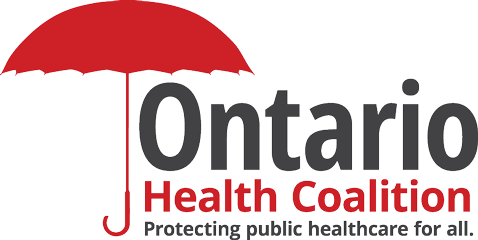‘Right away. It’s overdue’: Crombie pledges immediate funding for Peel Memorial to end Brampton’s hallway healthcare crisis
Posted: February 19, 2025
(February 19, 2025)
By: Muhammad Hamza, The Pointer
This is a snippet of the full article, which can be found here.
Brampton Civic Hospital only has 645 beds, not nearly enough to serve its growing population.
This influx has put immense pressure on medical services. Despite the growing demand, Brampton still has only one full-service hospital to serve its residents. The long-awaited expansion of Peel Memorial is set to add 250 non-acute beds, but that’s far below the 850 acute-care beds that are desperately needed, according to the Ontario Health Coalition. But that figure is based on previous population figures, and does not include as many as 100,000 residents in the city not represented in Census data (due to the large number of unregistered dwellings and the high number of international students in Brampton).
The lack of long-term care beds has exacerbated the crisis, leaving many hospital beds occupied by patients who should receive care elsewhere. Janine Hermann-McLeod, Co-Chair of the Brampton-Caledon Health Coalition, points out the devastating impact of the ongoing health crisis.
“My own grandmother faced hallway healthcare at the hospital in Brampton over and over again when she was in long-term care 10 years ago and for years before that,” she tells The Pointer.
“She was left in hallways for 8-10 hours at a time with brain damage from her strokes, dementia, delirium from bladder infections, having forgotten a lot of her English and struggling to communicate very loudly or in any language but German. It was scary and difficult for her to be left in the hallway with no dignity like that, and this happened over 10 years ago. She was confused, scared, in pain, and it’s not the kind of care she paid taxes for years to receive at the end of her life.”
Hermann-McLeod criticized the healthcare policies of the Ford government and expressed concern about the burden these costs place on residents.
“Since she (her grandmother) passed, it’s only gotten worse. When she had her stroke that led her into long-term care instead of home care, the hospital tried to push her into a long-term care she didn’t want, but my mother was able and knowledgeable enough to say no and stand up for her,” she says. “Thankfully she ended up in the long-term care she wanted with good conditions, where we could visit her so she wouldn’t be alone and scared. But these days she could be fined hundreds of dollars every day for staying there thanks to Ford’s government’s Bill 7, and we would have to choose between equality and dignity for seniors and disabled people who need long-term care and dignity and good treatment of people who also need hospital beds.”
Despite Ford’s 2018 pledge to end “hallway healthcare” there has been no progress, as residents continue to suffer.
“Hallway Healthcare in Brampton has not improved as far as we can see. We hear endless horror stories: hallway healthcare for people in a mental health crisis,” Hermann-McLeod says.
“We hear from a lot of people who are having trouble accessing primary care, which only worsens health and adds to the burden on our hospital system. Another huge issue is when people without OHIP coverage cannot go to a family doctor and end up needing emergency treatment for preventative diseases.”
She describes the severe bed shortages in Brampton with just 645 beds at Brampton Civic and none at Peel Memorial, which is not an inpatient facility. With a combined official population of 882,117 in Brampton and Caledon, this equates to only 0.73 hospital beds per 1,000 people, which is about a third of the Ontario average of 2.23 beds per 1,000 residents.
Hermann-McLeod suggests that the planned 250-bed expansion at Peel Memorial would do little to narrow this gap since those beds are designated for long-term care, not for acute hospital patients.
Brampton, she says, only has one full-service hospital, as Peel Memorial remains an urgent care facility without enough essential services to accommodate patients.
“Brampton currently effectively has one hospital, not two. The word hospital isn’t even in the name of Peel Memorial Centre for Integrated Health and Wellness, because while they have a great urgent care with some extended capabilities like CT, it is still just an urgent care, not an emergency room,” McLeod explains. “To be a real emergency room, it would need to be able to admit patients, and it will not have that even when it expands, for some reason expanding without full testing capabilities, fully capable surgical operatories, a trauma unit, and ICU, or a maternity ward. Brampton Civic Hospital was supposed to add on to Peel Memorial, not be a replacement, but they spent an extra $300 million building it as a P3 under William Osler Health System. Despite this unsuccessful experiment with P3s, the Ontario government has continued to build them over and over again.”
She continues, describing that the strain on Brampton Civic has forced many residents to travel outside the city for care.
“The reason we are Brampton Caledon Health Coalition is that Brampton Civic Hospital is also supposed to cover Caledon,” she says. “However, we hear over and over about people in Caledon, and even people in Brampton, choosing to go to Headwaters in Dufferin because the wait times in Brampton are so long. There are 86 beds at Headwaters, and they are supposed to be covering residents of Dufferin. Going to a hospital that is further away to avoid extended wait times is just dangerous, particularly if your condition is life-threatening or could suddenly escalate.”
According to the Ontario Health Coalition (OHC), the healthcare system in the province has suffered as a result of the PC push to privatize large parts of the system. The OHC reported that public funding for private clinics has jumped to 212 percent since 2023, while public hospitals face growing deficits. Ontario now has the lowest per capita hospital funding in Canada, trailing 7.9 percent behind the national average, CIHI reported. If Ontario hospitals received funding at the same pace as other provinces, they would get $3.7 billion more annually. The funding cuts resulted in a significant shortfall in healthcare, leading to serious consequences, such as:
- Ontario needs 16,800 additional hospital beds by 2032, but the Ford government has only committed to 3,000 beds, which is just one-fifth of the required amount, according to the CUPE/OCHU 2024 healthcare report
- Hospital bed occupancy has climbed back to 93 percent, reaching dangerously high pre-pandemic levels, as per Ontario Health data
- The average emergency room wait time for hospital admission is now 19 hours, with 75 percent of patients not being admitted within the government’s target time, according to a report from StatsCan.
Click here for the full, original article


